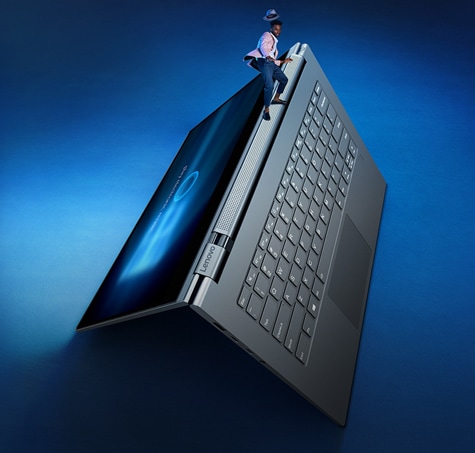These oem laptops are produced using reliably strong materials, making them very durable while enhancing their capacity to perform consistently at the highest level. For this reason, when you shop for oem laptops on the website, you will get the maximum return on your money. Their processing capacities and speeds are undeniably superb and their reasonable price tags make it worth spending on them. Factory OEM 14' Inch Laptop Notebook PC Intel Ice Lake I3 Dual Core UHD Graphics 8GB RAM 256GB SSD Mini HDMI Dual Core Windows 10 Laptop. Order: 2000 Pieces. Screen Size: 14'. Operating System: Windows. Weight: 1.21.4 kg. Only for OEM workstation customers. Only for OEM Desktop workstations. Optional 4 th and 5 th year flex warranties available for OEM customers only. Dust filtration is a configurable feature, available only on Z2 Small Form Factor, Z2 Tower and Z4. EVOC High Performance Systems NL501 (NL50RU) 15.6' FHD, 2.3 GHz Ryzen 5 4500U, AMD Radeon Graphics, 32 GB 3200MHz RAM, 8 TB PCIe SSD + 4 TB SATA SSD.

Here is simple tutorial how to change, insert, update or remove Windows 10/8/7 OEM logo in 'My Computer' or Windows 10 it is 'This PC'.
There is several ways to change OEM logo and information, you can update windows registry etc. but for me seems bit to much and I prefer to use OEM Configurator V2. this program works with all versions of Windows and you don't need any additional updates to use it.
Generally this info is all there when You buy new PC or Laptop but you may want to remove or update some information so here is easiest way to do so.
How to change / update / remove Windows 10 OEM logo.
First this go and download OEM Configurator V2 and OEM logos from here: DOWNLOAD
All downloads are safe, there's no malicious software included, all you have in this folder is OEM Configurator V2 and OEM logos.
Open OEM Cofigurator V2.exe and run it, you should get something like this:
In my case all information is filled in but if you want to display no info then just leave all entries blank.
To update OEM logo, choose one form the folder you download from here and move it to your Windows folder, now just press select 'Select Image' and navigate to your Windows folder and choose your LOGO.bmp and then click 'Save OEM informations'.
Also you can use custom images as Your OEM logo just one thing to remember that your custom OEM Logo will have to be '.bmp' format and 120 x 120 size.
You cant do any harm to your device by using this software so feel free to try out different setting and just mess around until you happy with information you have entered.
See video here: How to change / update / remove OEM logo and information in Windows 10
Late last year, Duo Labs, the security research team of Duo Security, purchased a stack of OEM (Original Equipment Manufacturer) laptops to see how secure they were. Some problems immediately jumped out at us, like the eDellRoot issue, but a few other issues took a bit more sorting through.
I took a look at the network by sniffing the laptops as they were first booted, and then, once configured. The idea was to judge how secure the laptops were based on network traffic and network presence.

Spoiler alert - from a network perspective, the laptops I looked at were kind of a mess.
Normally, we would just find the flaws, report them to the vendor, and release this paper after patching was complete and everyone was safe. But in this case, we found issues that would not necessarily meet the criteria of a vulnerability report.
The main takeaways include:
- Many of the privacy issues found affected all of the laptops. Some were more serious than others, but all laptops had issues.
- Network protocol-related security issues affected all laptops, starting from as soon as the laptop appeared on the network during initial boot.
- After Patch Tuesday updates, many privacy settings that were adjusted were reset to their default settings - without any notification to the end user.
- The lone OEM Microsoft Signature Edition model was more desirable since it contains less bolted-on and unneeded software, resulting in less questionable traffic.
- One particular finding: McAfee is using web bugs that can be used to track and serve advertising to users. In our opinion, this is the only purpose these web bugs serve. In addition, it is against security best practices to trust third party sites and allow them to load content. It puts users at risk and benefits only the vendor and advertisers.
Some of the issues were so glaring we felt compelled to provide tips on securing these laptops. Download our paper (PDF) for a full technical explanation of our security research and what you can do to minimize the impact of those results.
The main attack scenario to consider is not the new laptop user at home - at least from a network perspective - but, rather, when that new laptop user grabs their fresh purchase and heads out the door to the coffee shop, the hotel on a trip, the favorite restaurant chain with “free Wi-Fi,” and so on.
Drivers rdm usb devices. Default laptop settings and protocols make it easier for an attacker to sniff, grab, view and redirect the unsuspecting laptop user’s traffic for illicit purposes. Attackers can steal online bank account passwords, view company data and more due to default firewall settings and services that are exposed on the network.
This is just powering it up - good hygiene like using strong passwords and two-factor authentication, regular patching, and safe web surfing habits are not even being discussed in this scenario.
Default Settings Compromise Privacy
There are a lot of new features in Windows 8 and 10 that collect data about the user and laptop. Some of that data is uploaded to Microsoft and OEM vendor servers. On Windows 8, there are five screens of privacy settings, and on Windows 10 there are thirteen.
All of them are on by default. Many of the applications and services connected to these privacy settings start phoning home as soon as the laptop is connected to a network, before you are logged in. For anyone concerned about privacy, it would be ideal to have a chance to opt out - particularly when it’s not obvious that the collection and uploading of data is even happening.
Turning them off seems like it would be a straight-forward process, but in some cases it requires either a service to be disabled or registry keys created/adjusted. So, an average user either wouldn’t know how to do it, wouldn’t think to do it, or both.
Additionally, when some of these applications and services get updated on Patch Tuesday, they resort to their default settings - without warning. This means every Patch Tuesday you will have to be in the habit of checking those privacy settings to ensure they stay off.
Data Collection Privacy Concerns
Encrypted network traffic was not examined, although after some investigation it was possible to tell at least the type of data being transmitted back to a Microsoft or OEM vendor server. It might give one comfort to know that virtually all privacy-related data was encrypted before transmission, but the data is still being collected nonetheless.
I understand the desire of the vendors to collect data to improve their products, I would just prefer to not be opted in without consent, particularly after I’ve adjusted the privacy settings with the explicit intent to stop data collection.
For the inexperienced beginner, the paper may seem rather daunting, but for your average IT person, this should be fairly easy to follow and understand. And let’s face it, every one of us who “computer” for a living have become the family and friend de facto standard help desk for those nerd-challenged who get a new laptop, and were probably asked to “make it secure from the variousevils you keeping going on about”, so this one’s for you.
Is the laptop safe enough to take to a hacker conference? Well, it won’t be low-hanging fruit if you complete the mitigation steps, but I’d still consider it at risk in extremely hostile environments.
This is a laptop running Microsoft Windows and a blog post about risks and turning off the really crazy stuff, not a hardening guide. That being said, I’d be a lot more confident handing the laptop back to your tech-challenged friend if the steps from the Detailed Mitigation Instructions section of the paper are taken.
At least from a network perspective, things will be a lot better before they pack up that laptop and head to the nearest coffee shop with public Wi-Fi.
Download the full technical paper (PDF) for detailed mitigation instructions, including how to adjust Windows 8 and 10 privacy and security settings:
- Removing McAfee and setting up Windows Defender
- Adjusting firewalls to stop the transmission of data
- Disabling settings for Windows privacy
- Disabling and deleting OEM apps that gather data
And how to configure advanced security settings, including:
Oem Laptops & Desktops Driver Downloads
- Disabling LLMNR, Smart Multi-Homed Name Resolution, WPAD, Teredo Tunneling and ISATAP
- Other low-level privacy setting adjustments
